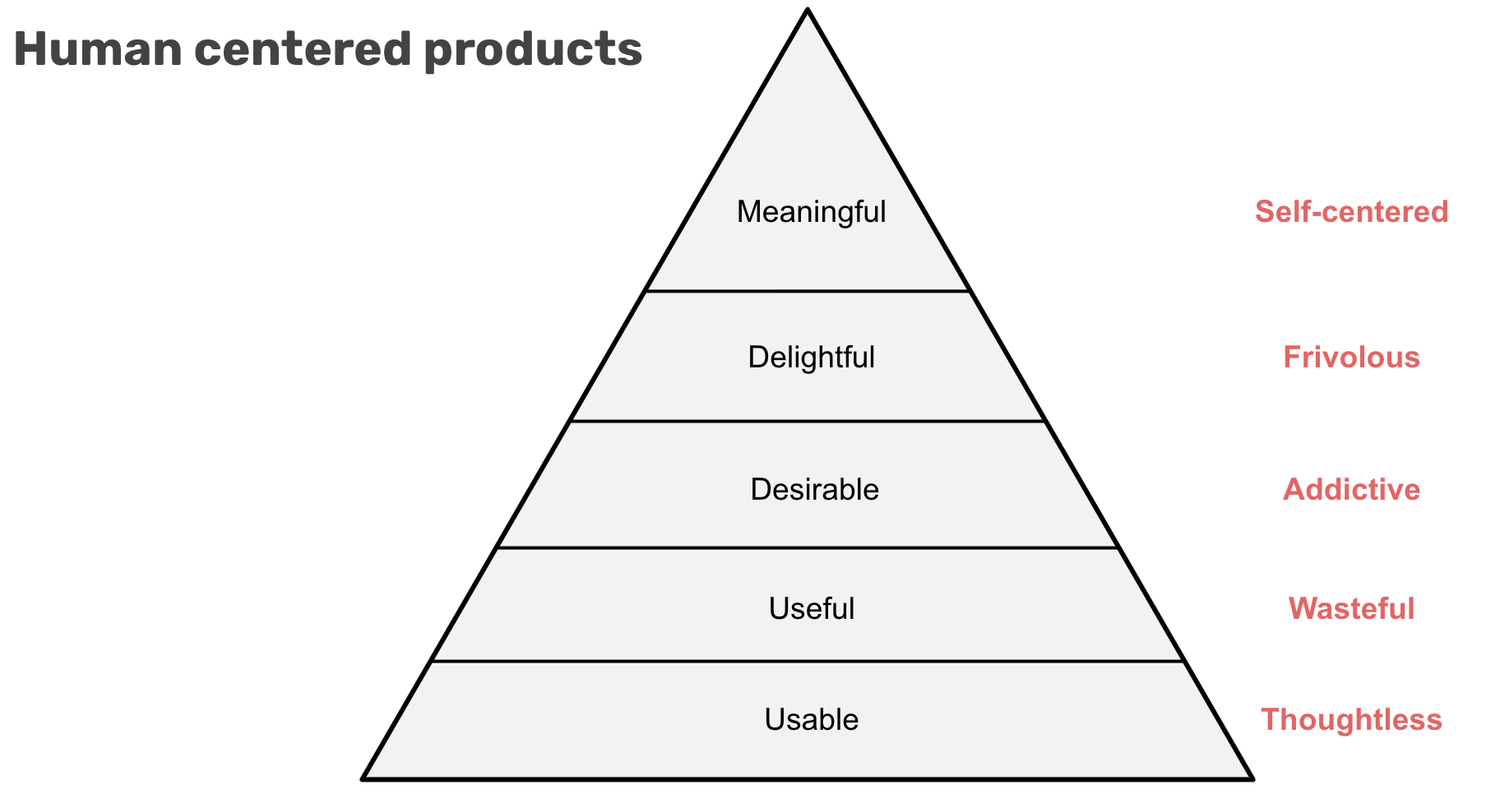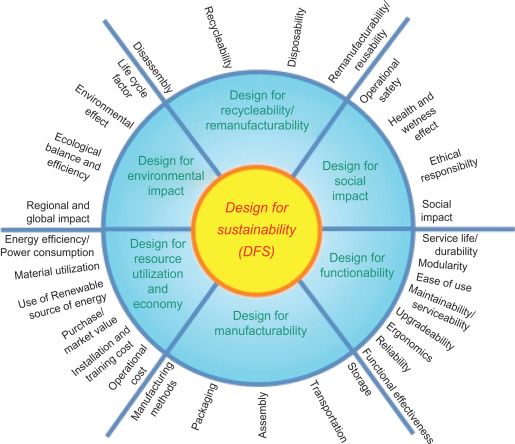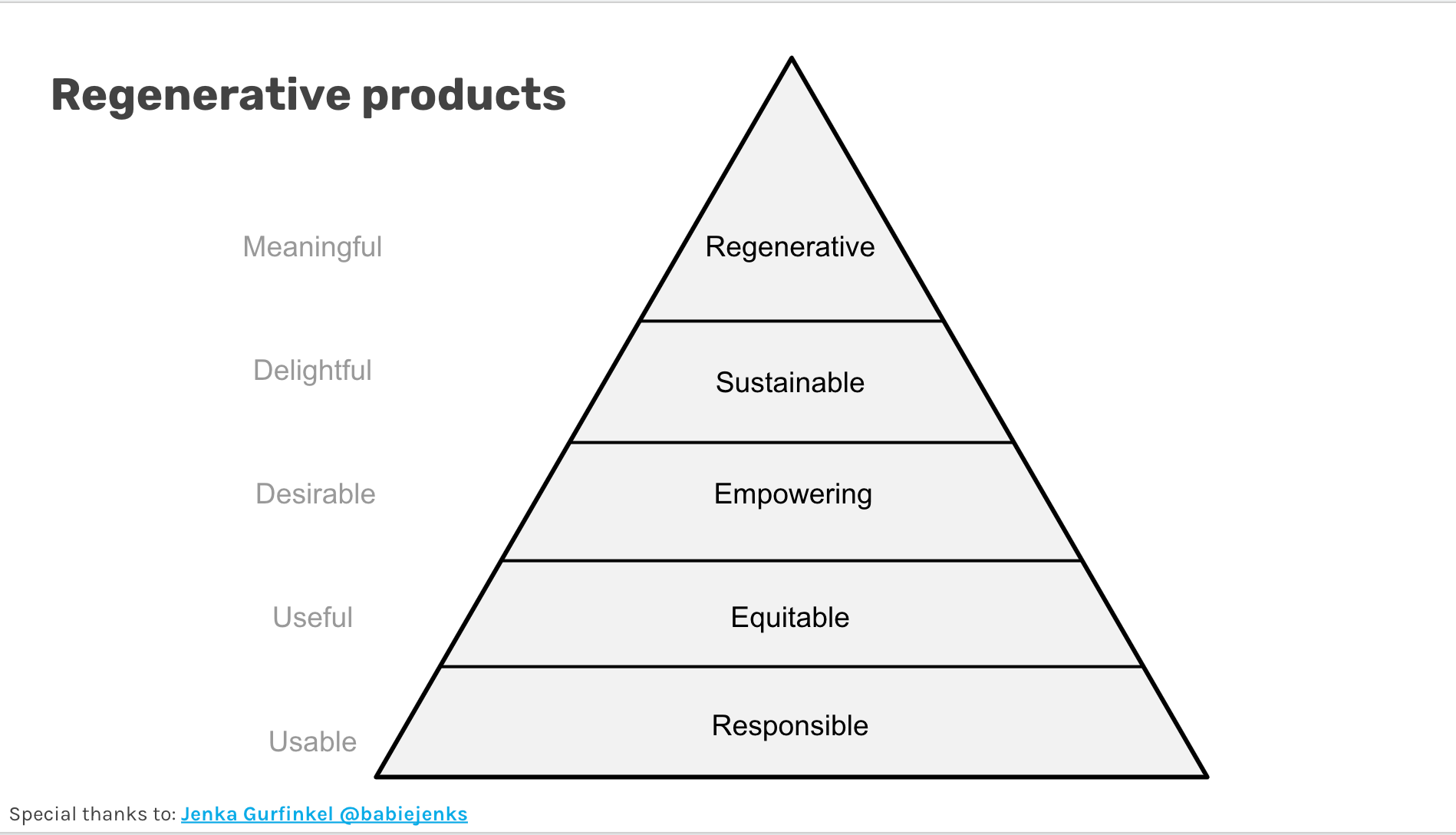Beyond Human Centred Design
We've built an entire economy on convenience and now we need to think of ways beyond that.

This week I'm giving a couple of talks so keeping it light. I wanted to briefly touch on the contents of my talks in Auckland and Hamburg. I also hosted London's Product Tank on Discovery and Delivery.
Rethinking the Value of the Service Economy
In my talk I spoke briefly on this article about pizza arbitrage. The article by Ranjan Roy looks at how the gig economy is squeezing value out of restaurants and workers instead of creating sustainable businesses. Tricking businesses onto your platform and then creating logistics nightmares for them is pretty much as bad as it gets.
Grubhub is one of many offenders doing their best to squeeze small businesses out of online listings. The piece linked here shares that Grubhub has used their tech teams to leverage fees of $6.42 for a single cup of coffee. Customers trying to avoid delivery platforms and the fees they could charge to small businesses have little choice in the matter sometimes.
Our decisions shape the world around us. We've built an entire economy on convenience and now we need to think of ways beyond that. Not everything we do conveniently today will scale for our long term future.
The attention economy and the convenience economy we find ourselves in as well as the thinking shaped by it have created outcomes built on scarcity and unit economics. We've written books like Hooked and then sold the cure to the attention deficits our products have pushed into the world. We don't hae to monopolise human attention to achieve maximum value. We just need to change where we measure it.

Human centred products usually default to extractive value
We've been taught to think of human attention as a scarce resource we should develop products to command and draw from. This has made our products more addictive and less thoughtful.
Human centred design can be considered harmful, if only for all the other kinds of design it ignores: ecology, sustainability, systems beyond transaction support. Focus on just the humans means we're leaving a lot of value on the table, and a lot of room for good as well.
Making products more sustainable is important. Right to Repair legislation is being fought by some of the tech juggernauts, at the expense of a better world for us all. Products built around just one customer tend to think of value as extractive and transactional. When we expand our horizons, this kind of legislation could power our ability to build new industries and buisnesses around repair and servicing. When we think in terms of the customer, their family, their neighbourhood and their community, we can achieve better outcomes.
Extractive value isn't the only kind of value there is. Regenerative products can be achieved and one great example is Patagonia. But there are other thinkers pushing for new economic models capable of regenerative value.

If the chart above makes you feel like building a product is less like deciding what's on the packaging and more like running a game of Sim City, you're right.
Building products is complex and takes a lot of thinking about how we sustain products and society at scale.
Measuring Value
We're coming out of a decade of design for convenience and frequent use. Our ways of thinking about the value of design have been built on thinking in scarcities. As product people, we absolutely need to understand the unit economics of our product, as Marc Abraham says. But we need to look beyond those unit economics as well.
We often think of product success in unit terms. We still measure most forms of product success using individual metrics. Conversion, utilisation, engagement, adoption, etc. These are only part of the story a product should be measured with.
One of the most important things to consider for the next century of Product Development is where and how we measure value.
Learning from our neighbours
As a product manager, you might ask yourself, where should I go to learn all this? Well, we have neighbours in other industries who can lend their expertise. The circular economy is one great example of thinking about how to build an economy of scale that minimises waste.

Developing sustainable products doesn't have to be or feel impossible. There are practical steps some companies are taking to be better for the planet. There are a number of startups working on being greener. We can do better if we ask hard questions, even if we don't have the right answers.
Product people don't have to try to reinvent things. There are lessons we can learn from other industries. We can strive for products that are responsible, equitable, empowering, sustainable and ultimately regenerative. These are much harder problems, but also much more valuable to our customers and ourselves.
Working Questions for moving beyond human centred design:
- What's the bigger context our product happens in?
- How can we go beyond compliance to do the right thing?
- Who benefits from this product? Who’s excluded? How?
- Who’s got the power using our product? How do we know that?
- What responsibilities do we have to our community?
- How could we achieve better outcomes with our customers?
Additional Resources
I'm really glad you decided to read this week's post. If you're interested in regenerative products and deeper learning, here are a few things for you.
I wrote a resources page in Notion you can access here or using the bookmark below.

My slides for the 2021 edition of Beyond Human Centred can be found here.


